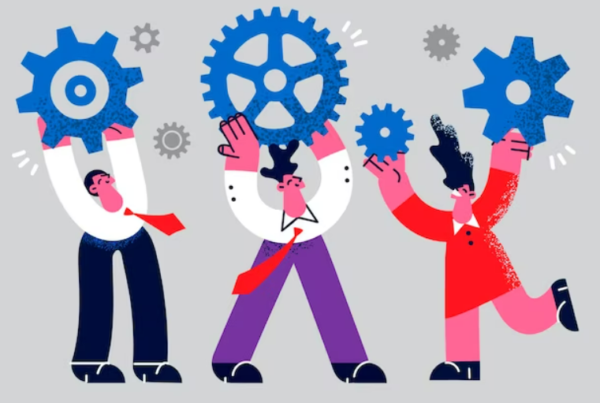When more than one individual is involved and works in accordance with the standards established by the organization, a team is formed. Conflict is always a possibility when multiple individuals with different personalities come together.
Differences in ideas, views, experience, talents, viewpoints, circumstances, norms, working practices, and other factors can lead to conflict inside an organization. These are all categorized as sources of conflict.
Organizational conflicts are the primary factor in poor management, working conditions, etc. The objectives and financial success of the company are impacted if the working and management systems of an organization do not operate in accordance with standards.
In order to avoid this scenario in an organization, the leader must resolve issues as quickly as possible. To resolve team disagreement at work, the leader should have some effective conflict resolution abilities.
What is Resolution of Conflict?
Organizational conflicts shouldn’t be overlooked; instead, one should voice complaints, assign responsibility, or even resolve them through standard negotiation or compromise techniques.
Understanding the issue in depth will help one approach a solution step by step while maintaining a good balance between the employers and the business. In the workplace, this is referred to as dispute resolution.
12 Strategies for Resolving Team Conflict
Conflicts at work can occur for a variety of reasons. In order to overcome conflict in a team, let’s look at a few workplace conflict resolution techniques:
1. Refer the dispute in-depth:
This is the first stage in resolving a dispute at work. In order to understand the underlying cause of a team conflict, the head or leader should bring it up in detail. The team leader should address the issue with the other team members before beginning the formal dispute resolution procedure.
Referring a conflict at work entails having a perspective or an overview of what has actually occurred. This needs to be done as quickly as feasible because the dispute intensifies if the problem is not recognized or taken into account in a timely manner. In the end, it has an impact on the working, the speed, and the organization as a whole.
2. Consider its effect – cooperation is required:
After referring the conflict, consider its effect on work and output. then talk about it with your team. After establishing an agreement, the team members should begin the process of resolving the conflict once they are aware of it.
At this phase, teamwork is essential since only if everyone on the team works together will the process on dispute resolution start. The participants will learn how to address the problem and what kind of technique to use by observing the impact.
Sometimes the problem and its impact are tiny, but the technique taken to fix it is drawn out, wasting both time and money. Therefore, one should thoroughly assess the impact to avoid such time and financial waste.
3. Communicate:
It’s imperative to communicate at all stages of the resolution. Keep the lines of communication open. The team members should actively participate in the open discussion of the problem.
One needs to listen properly in order to communicate effectively. Pay attention to what others are saying, then react in line with the discussion’s and its conclusion.
Every participant will benefit from communication and breathe a sigh of relief as problems are immediately resolved and various ideas are brought to the table.
4. Understanding the situation:
To ensure that everyone’s viewpoint and point of view are heard, each team member should discuss their own point of view. Keep in mind that while discussing the problem, emotions should be set aside and the true issue should be taken into consideration.
Conflicts may not be resolved if feelings are not set aside. Therefore, in order to achieve good outcomes, it is preferable to fully comprehend the problem at the professional level.
5. Clearly state the views:
Because each person will have a different point of view, conflict may result as a result. To prevent this, it is important to state each member’s actual opinions in order to effectively identify and express the issue.
As a result, assigning roles and responsibilities to every team member will aid in better and more efficient problem clarification.
6. Make assumptions:
Estimates are made while doing an analysis. The easiest method to predict what would have happened in this situation is to make assumptions. They are the pre-analysis created to effectively resolve the circumstance.
The presumptions act as a sort of foundation that enables the process’s leader to get going without any problems. Making assumptions can be risky, thus one should do it in accordance with the circumstances. Otherwise, making incorrect assumptions could exacerbate the issue.
7. Create smaller groups:
By creating smaller groups, the leader will have an easier time handling the problem. In addition to saving time, it will also make the problem-solving process less stressful. Divvy up those with comparable alliances. Analyze every position in such smaller groups.
The group will have a better grasp of the situation and aid in the ongoing process of problem-solving inside the company by taking into account all the points of view.
8. Accommodating:
There are always two sides to any quarrel, the competing side and the opposing side. According to the accommodating technique, give what the other party requests.
It’s a tactic where one party tries to appear peaceful and wants to resolve the conflict without stirring up a fuss. This tactic, which involves one side agreeing to satisfy all of the needs of the other, is a form of compromise. However, it is effective when quick results are required.
9. Collaborating:
The key objective is to come up with a unique solution that everyone can agree on. So, in order for both parties to arrive at a consensus and the issue to be resolved, the organization’s leader must cooperate the thoughts, convictions, and viewpoints of both parties.
In addition to assisting in a peaceful resolution of the conflict, this collaborative process will also prevent internal conflicts that can occasionally occur during the resolution of the conflict and obstruct the process.
10. Avoiding:
Avoiding simply means to turn a blind eye to the issue. The difficulties in tiny organizations typically have a small scope. Therefore, the leader decides to dismiss a quarrel when it involves such minor concerns in the hopes that it will resolve itself.
This kind of approach is only appropriate when the problem is little enough to be disregarded. This is due to the fact that sometimes minor problems turn into major ones, which makes the problem worse. Then, dealing with such a bad scenario becomes challenging. This avoidance tactic ought to be avoided in cases involving huge organizations as well.
11. Compromising:
Making a compromise is a type of approach in which the leader asks both parties to give up certain aspects of their beliefs in order to reach a reasonable, though unsatisfactory, conclusion. It implies to agree while putting one’s own opinions aside and asking the other person to do the same. Only when both parties have equal authority, rank, and position within an organization does this type of strategy succeed.
12. Competing:
Competition is a process in which one party prevails and the other is defeated. Because the disagreement is handled as a form of competition, this type of technique is beneficial. This tactic is effective when the conflict is not too serious, particularly in times of emergency.
The winning party is granted the opportunity to say and do whatever they want, but only in a peaceful manner, after the leader urges both parties to compete. In this method, employee productivity rises while maintaining the same environment. In this way, the problem is resolved amicably.
Conclusion:
So the techniques or recommendations listed above can be applied in any organization. The aforementioned tactics can be applied in organizations of any size, whether large, small, or medium. Each case calls for a different approach from these ones.
Conflicts are supposed to increase where there are more people present. This is due to the fact that each organization’s or company’s personnel come from various backgrounds and religions, have various working styles, and hold various positions within the organization.
Therefore, the matter becomes an issue while the issue develops into a significant conflict when all of these many viewpoints and objectives come together. People with different personalities must unite under a shared belief in order to create a harmonious workplace. Only then will conflicts be permanently resolved.




